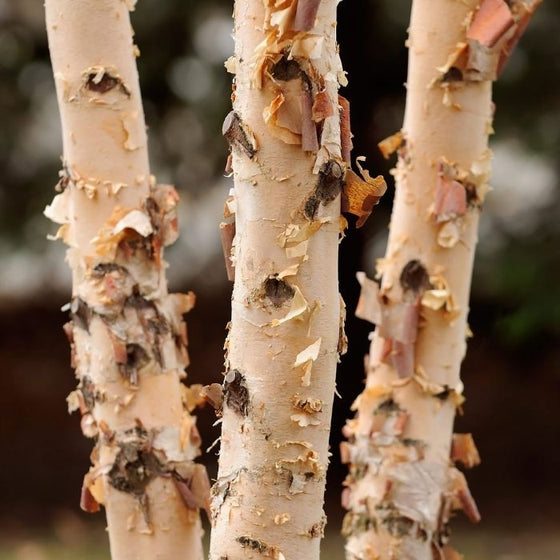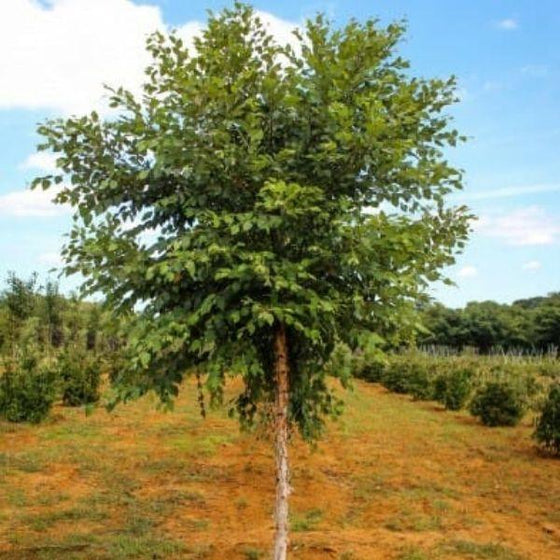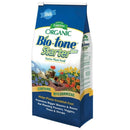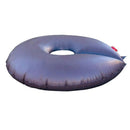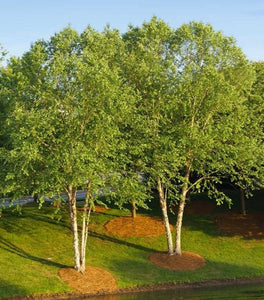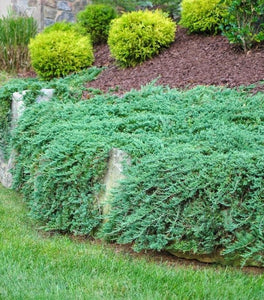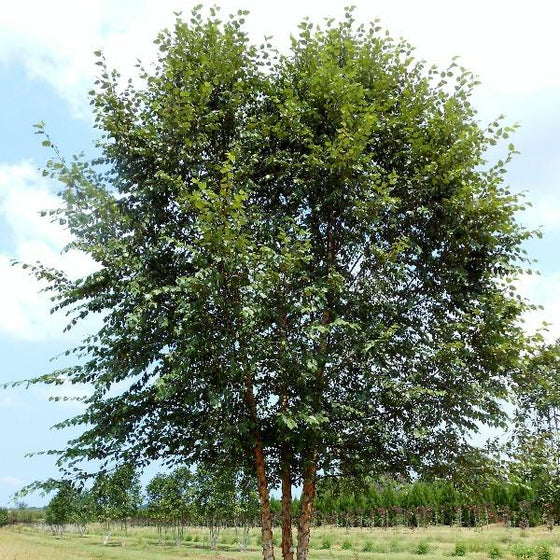
Images Depict Mature Plants
Dura Heat Birch Trees for Sale
Dura Heat River Birch is a more heat and drought-tolerant form of River Birch, with unparalleled insect and disease resistance.
Densely pyramidal form with glossy green leaves that fade to clear butter yellow in fall, this tree is the perfect addition to any landscape. The tree sports a pinkish-orange winter bark and makes for a gorgeous focal point in a yard.
The Dura Heat River Birch is perhaps one of the most culturally adaptable of all the birches. It grows well in acidic, loamy, moist, well-drained soil. The River Birch can handle semi-aquatic conditions, but can also tolerate drier soils. Although these trees are heat tolerant, they do benefit from a cool and consistently moist root system. Planting shade-tolerant understory plants and/or applying mulch will help shade the ground keeping the soil cooler.
Some common uses of the Dura Heat Clumps include use as erosion management along stream banks and ponds, as a specimen or small group plantings, and as foundation plantings for homes, parks, and commercial properties.
Dura Heat Clump River Birch Highlights:
- Unparalleled insect and disease resistant
- Densely pyramidal form with glossy green leaves that fade to clear butter yellow in autumn
- Showy bark pinkish-orange with prominent exfoliation
- Heat and drought tolerant
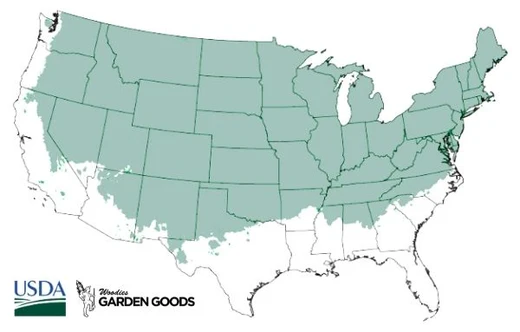
| Hardiness Zone: | 3-7 |
|---|---|
| Mature Height: | 30 to 35 feet |
| Mature Width: | 25 to 30 feet |
| Classification: | Broad Leaved deciduous tree, Shade Tree |
| Sunlight: | Full Sun |
| Habit: | Upright, Vase Shaped |
| Foliage: | Glossy Green, Butter Yellow fall color |
| Flower Color: | Inconspicuous |
| Pruning Season: | No pruning needed |
| Soil Condition: | Any well drained soil |
| Water Requirements: | Water well until established |
| Uses: | Tolerates moist soil and full sun. Will adapt to drier sites |
How to Care for Dura Heat River Birch
Follow these guidelines for best results.
STEP 1: PLANTING
We suggest when planting your newly purchased Dura Heat River Birch plants that you dig a hole twice as wide as the root system but not deeper. Depending on the quality of your existing soil you may need to add a locally sourced compost or topsoil to the back-fill soil. We do not recommend using straight topsoil or compost as a back-fill soil because more times than not these products will retain entirely to much moisture and will cause the root system to rot. Adding compost or topsoil will help the young feeder roots of Dura Heat River Birch to spread through the loose, nutrient rich soil, much easier than if you used solely the existing soil which more times than not will be hard and compacted. The most common cause of plant death after transplanting is planting the new plant to deep. That is why we do not recommend planting in a hole any deeper than the soil line of the plant in the pot. A good rule is that you should still be able to see the soil the plant was grown in after back-filling the hole. Bio-tone starter fertilizer is a great starter fertilizer that provides plants with mycorrhizae fungus.
STEP 2: FERTILIZE
Trees such as Dura Heat River Birch grow best if they are fertilized lightly in the spring once frost has passed with a well-balanced, extended-release, fertilizer such as espoma Tree-tone. Fertilize Dura Heat River Birch again 6 to 8 weeks later to encourage denser foliage or faster growth of young trees. Either chemical fertilizers or organic matter can be used successfully with Dura Heat River Birch . Since an organic method of applying manure and/or compost around the roots, produces excellent results and also improves the condition of the soil, this would be an excellent first line of attack. Organic additions to the soil can also be combined with a shot of chemical fertilizer for maximum effect. If chemical fertilizers are used on your Dura Heat River Birch, applying a slow-release, balanced fertilizer once a year is probably the simplest solution. There are many slow-release fertilizers on the market. If you can find a fertilizer formulated for shrubs and trees, this fertilizer would work well on Dura Heat River Birch. However, slow-release is certainly not the only way to fertilizer trees such as the Dura Heat River Birch Tree. A less expensive fast release fertilizer such as a 10-10-10 will work just as well if applied twice during the early spring and early summer. If you are looking for a fertilizing routine tailored to your specific conditions, a soil sample should be taken and the fertilizer and trace elements matched to the needs of your soil. Don’t fertilize Dura Heat River Birch after August. Fall is the time for plants to begin preparing for dormancy. Fertilizing at this time may stimulate new growth that will be too tender to withstand the winter. In the South, a late May application and another in July would be about right. More northern areas may wish to fertilize only once in June or July.
STEP 3: WATER
After back filling and lightly compacting the 50/50 mix of existing soil and compost give the Dura Heat River Birch Tree a good deep watering. This is not to be rushed. Most of the water you put on the plant at first will run away from the plant until the soil is soaked. A general rule of thumb is to count to 5 for every one gallon of pot size. For example a one gallon pot would be watered until you count to 5 a three gallon pot would be 15 and so on. Check the plant daily for the first week or so and then every other day there after. Water using the counting method for the first few weeks. Gator Bags can be used to help aid in this process and also provide plants with a good soaking due to the slow release of the water into the root-zone of the plant. Soaker Hoses can also be used to water when planting a long row of trees.
STEP 4: MULCH
We highly recommend that you mulch your Dura Heat River Birch with either a ground hardwood mulch or a ground cypress mulch depending on your local availability. Any type of mulch will do but cypress or hardwood mulch will be of a higher quality and provide better nutrition overall as they breakdown. Mulching helps to keep weeds away which will compete with your new investment for water and nutrients. A 2 to 3 inch layer of mulch is sufficient but remember to take care not to cover any part of the stem of the plant with mulch. Its better to leave a one inch gap of space between the mulch and the stem or trunk of the plant.

